
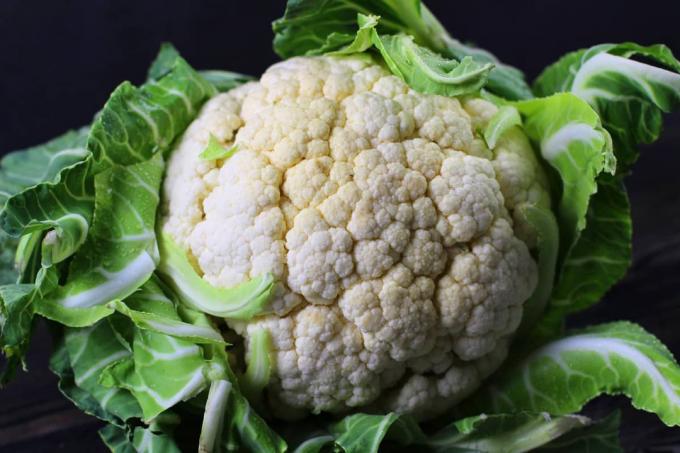
Table of contents
- Typical features of cauliflower
- Good neighbors for a mixed culture
The cauliflower eats the white, fleshy, thickened flowering branches with the not yet fully developed flower buds, the florets. The right neighbors in the bed play an important role for optimal growth.
Typical features of cauliflower
- Botanical name: Brassica oleracea var. botrytis
- One of the most popular types of cabbage
- Edible inflorescence in the middle of the leaves
- Closed thickened flower buds
- Develop into a solid white cauliflower head
- Location sunny, dry and not too hot
- Deep, loose, humus-rich and evenly moist soil
- Harvest from June to October
- The whole head is harvested
Tip:
In order for cauliflower head to keep its white color, it should not be exposed to the sun. Accordingly, the inner bracts are placed over the head and tied together.
Good neighbors for a mixed culture
aubergine(Solanum melongena)
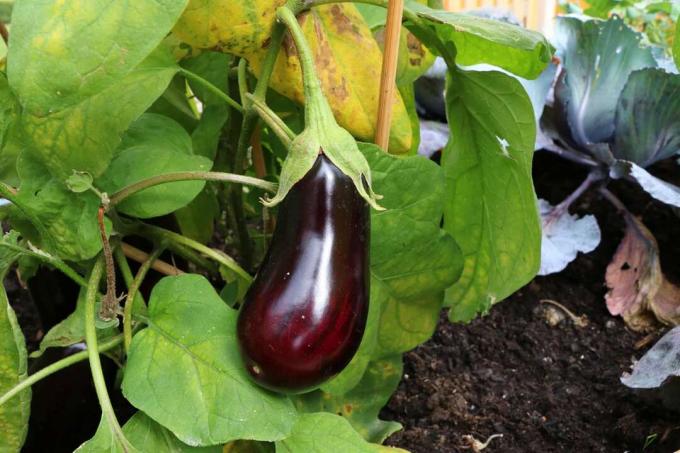
- A Mediterranean vegetable classic
- Cultivated as an annual
- Growth height 50-150 cm
- Cultivation outdoors, preferably in a greenhouse
- Outdoor sunny, sufficiently warm place
- Soil should be nutrient rich
- Harvest from late summer to autumn
Tip:
Since the aubergine is a very sun-drenched plant, a spot in front of the south wall of a building would be ideal for outdoor cultivation.
bush bean(Phaseolus vulgaris)

- Grows as an annual plant
- Reaches a height of 30-60 cm
- Prefers sunny to partially shaded locations
- Rather light, well-ventilated and quickly warming floors
- Harvest after two to three months
Tip:
Beans leave plenty of nitrogen in the soil, making them a good preceding crop. a. for cauliflower and leeks. However, they are incompatible with themselves.
endive(Cichorium endivia)

- Better known as a frisee salad
- Cultivated as an annual
- Forms broad rosettes of leaves
- Growth height 30-70 cm
- Thrives well in warm, sunny and sheltered spots
- Soil above all deep and rich in humus
- Harvest August into autumn
- Ideal follow-on crop for heavy feeders
- Observe a four-year break in cultivation with other composite plants
Peas(Pisum sativum)

- Sugar peas, marrow peas, shell peas or peas
- Sugar snap peas especially popular
- Annual and herbaceous
- Prefer sunny, airy locations
- Loose and fertile soil
- comply with crop rotation
- Plant in the same place after five years at the earliest
- Harvest after 12-14 weeks
Cucumber(Cucumis sativus)
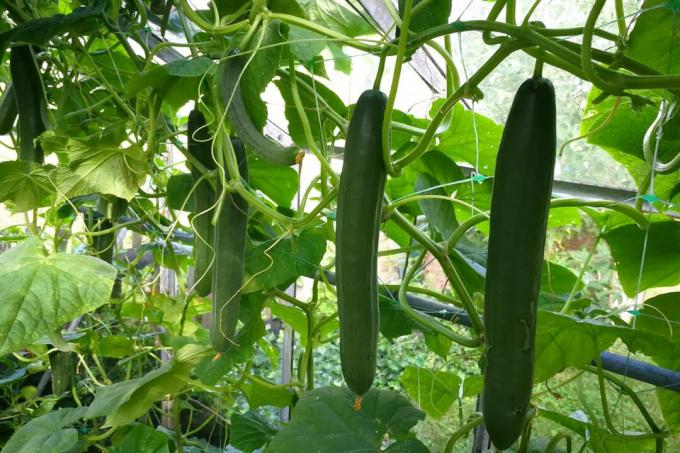
- Annual cultivated plant
- Declined or climbing growth
- Wind-protected, full sun and warm, humid locations
- Soil humus and loose
- Should heat up quickly and not sludge
- Adhere to a four-year break in cultivation
- Comparatively high water requirement
- Start of harvest about three weeks after flowering
Kohlrabi(Brassica oleracea var. gongylodes)
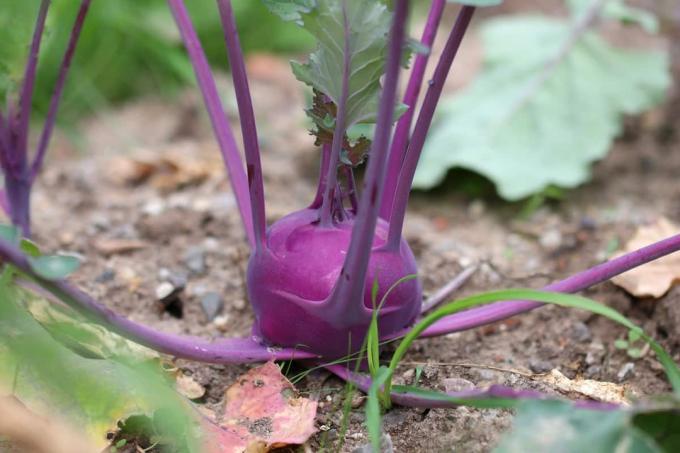
- A cultivated form of cabbage
- Fast growing cabbage
- Thickened above-ground shoot axis is used
- Formation of the tuber in the first year
- Prefers partially shaded to sunny places
- Humus-rich, evenly moist substrates
- Culture duration 10-14 weeks
Tip:
If you harvest kohlrabi too late, it can quickly become woody and inedible. It is best harvested before the end of the growing season, especially early varieties.
lettuce(Lactuca sativa var. capitata)

- Grows once or twice a year
- Loves sunny locations
- Growth restricted in the absence of light
- Subsoil loose and deep
- Mittelzehrer requires a high humus and nutrient content
- PH value not below 5.5
- Harvest eight to ten weeks after sowing
leek(Allium porrum)
- Biennial, herbaceous with growth height of 60-80 cm
- Needs a sheltered sunny to partially shaded spot
- Soil should be deep and rich in nutrients
- More demanding than onions
- To form white stems, pile up the leeks
- Harvest from June depending on the variety and planting
carrot(Daucus carota)
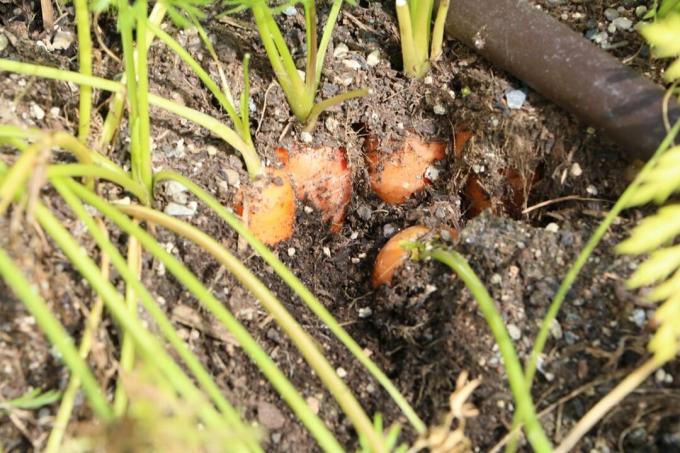
- Annual cultivated root vegetables
- Sunny spot particularly well suited
- Grows very well on loose, stony, sandy-loamy soil
- Be sure to thin out
- There is no optimal harvest time
- The right time is a matter of taste
- The earlier, the sweeter and milder the carrot
Tip:
If the soil is too heavy and loamy, ridge cultivation is recommended, similar to asparagus cultivation.
paprika(capsicum)

- Perennial herbaceous plants
- Both spice and sweet peppers
- Planting site should be very sunny, warm and sheltered from the wind
- The warmer the location, the faster peppers will ripen
- Mix in compost and horn shavings when planting
- Depending on the variety, harvest between July and October
broad bean(Vicia faba)

- Also known as broad beans, broad beans and broad beans
- Exceptionally cold resistant
- Sowing possible before the ice saints
- Can grow up to 200 cm high
- Like all types of beans, it needs sufficient sun
- Thrives on heavy and moist soil
Tip:
legume (legumes) should only be planted in one and the same place every four to five years.
Beetroot(Beta vulgaris)

- Related to sugar beet and Swiss chard
- Different shapes and colors
- Biennial herbaceous growth
- Prefers sunny locations
- Also thrives in semi-shade
- Harvest from July until the first frost
celery(apium)

- Celery species grow once or twice a year
- Sunny to partially shaded beds
- Fertile, nutrient-rich soil, constant moisture
- Sandy, humus-rich loamy soil is ideal
- Hoe the soil regularly during cultivation
- Harvest from October
spinach(Spinacia oleracea)

- Cultivation possible all year round
- Spring, summer, autumn and winter spinach
- Grows 50-100 cm high
- Location likes sunny to semi-shady
- Varies depending on the spinach variety
- Loose, well-drained and humus-rich soil
- pH between 6.5 and 7.5
Tip:
Spring spinach can be harvested from May to June, summer spinach from June to August, autumn varieties from September to December and winter spinach in April.
 Home editorial office
Home editorial office
Learn more about vegetables

Mixed culture: 9 good neighbors of Swiss chard
The cultivation of Swiss chard in the home garden is uncomplicated and the harvest rewards are considerable. Varieties with colorful stems are also real eye-catchers in the bed. Carefully selected neighboring plants contribute to healthy growth.

Mixed culture: 17 good neighbors of beetroot
Because of its uncomplicated nature, beetroot is often cultivated. To optimize the health and taste of root vegetables, it is advisable to plant good neighbors. These have a positive effect on growth and protect against pests and fungi.

12 good neighbors of cucumbers | mixed culture
Cucumbers are popular vegetables for mixed crops with other crops. Root vegetables are just as suitable as lettuce as plant neighbors. Plantings with kitchen herbs are attractive because they enrich the garden and kitchen. Flowering ornamental plants also improve growth.

10 good neighbors for onions | mixed culture
Good neighbors for onions or a beneficial mixed culture is not only natural, but It also reduces the maintenance effort, can keep pests away and the risk of disease to reduce. You can find out which plants are suitable here.

Mixed culture: 11 good neighbors of kohlrabi
The kohlrabi likes to root next to many other plants, so a mixed culture with it is easy to implement. Not only does it grow splendidly and healthily. Even the scarce space in a house garden can be used optimally. Which are his favourites?

Cucumbers: Cultivation of cucumbers in greenhouses/outdoors
Cucumbers are one of the most popular vegetables in this country. So what could be more obvious than growing your own refreshing cucumbers. Because cucumbers are heat-loving plants, they thrive in a greenhouse. If you don't have a greenhouse, you can also cultivate different varieties outdoors. You can find out what you should consider when growing cucumbers here.



